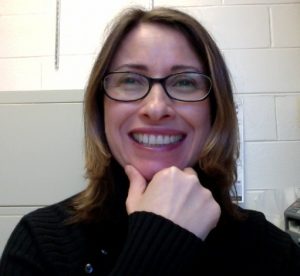Customer Case Study
As UNC-Chapel Hill’s Microbiome Core Facility increasingly collects more sequencing data information from microbiomes, it requires more support from ITS Research Computing for data analysis and processing.
The Client
The Microbiome Core Facility within the UNC-Chapel Hill School of Medicine studies the composition of complex environmental and host-associated microbial populations.
The human microbiome is the collection of nucleic acids from those non-human cells that make themselves home in the body, including bacteria, fungi, yeast and ancient single-celled organisms called archaea. Most of these organisms making up microbiomes are beneficial while a few can be harmful, partially depending on the overall composition of the complex microbial population.
 Established in 2009 and currently at the Center for Gastrointestinal Biology and Disease at UNC-Chapel Hill, Carolina’s Microbiome Core Facility conducts its own research and assists researchers from the center, NC and around the world with their research. The Core has a diverse range of clients from varied locations, from the College of Veterinary Medicine at North Carolina State University to a tobacco company, and from Russia to Morocco. The current projects in the Core include Russian frogs, British bumble bees, fermented tobacco leaves, Nicaraguan children who experience diarrhea, and people with gonorrhea.
Established in 2009 and currently at the Center for Gastrointestinal Biology and Disease at UNC-Chapel Hill, Carolina’s Microbiome Core Facility conducts its own research and assists researchers from the center, NC and around the world with their research. The Core has a diverse range of clients from varied locations, from the College of Veterinary Medicine at North Carolina State University to a tobacco company, and from Russia to Morocco. The current projects in the Core include Russian frogs, British bumble bees, fermented tobacco leaves, Nicaraguan children who experience diarrhea, and people with gonorrhea.
Andrea Azcarate-Peril, Ph.D., is the Core Director and is Assistant Professor of Cell Biology and Physiology at the School of Medicine. She’s investigating probiotics and prebiotics interventions to modulate the intestinal microbiota.
The Challenge
The Microbiome Core Facility opened when microbiome research started to catch fire. Sequencing had become cheap and the norm.
This kind of analysis, however, requires big-data management like that provided by ITS Research Computing’s cluster computers. It’s too much data to be handled by a principle investigator in a lab.
The Solution
Research Computing has been processing samples prepared and sequenced by the Microbiome Core Facility since 2011. Azcarate-Peril works with Jeff Roach, Senior Scientific Research Associate at Research Computing.
“He is fantastic,” she said. Roach is a great collaborator for this research, she said, because he has a biology background. “He gets it right away.”
Research Computing’s Engagement unit employs specialists from a variety of fields who can speak the language of the researchers they help.
Roach, who holds a Ph.D., is a mathematician with an undergraduate degree in computer science. He’s also worked in life sciences for many years. The Engagement unit also includes chemists, a physicist, a data architect, a statistician and a biomedical engineer.
The Results
Azcarate-Peril said Research Computing enables her research and enables the Microbiome Core Facility, in turn, to enable researchers around the world to conduct their research.
With Research Computing as a partner, the center successfully completed 120 projects between January 2013 and January 2015. Some of those projects had between a dozen and 18 samples while one of her own projects had more than 700 samples, she said.
As sequencing technology has advanced, researchers have been able to collect more information about the samples and thus, require more data storage.
In the early stages of the project, the facility was producing about 30 to 40 gigabytes a month. Now Research Computing is processing 100 to 120 gigabytes a month.
The Future
In the field of microbiome, still most projects focus on one conserved bacterial gene, the 16 rRNA gene, to determine community structure, Azcarate-Peril said. That level of study can determine that a sample has, for example, 30 Escherichia species. But are those E. coli? And what are those 30 Escherichia species doing? We don’t know, she said.
Research is moving toward shotgun whole-genome sequencing in which every gene in that sample is sequenced, she said. From that level of examination, researchers gain a huge amount of data. They can determine for example that a sample contains a specific strain of E.coli, in combination with viruses and fungi, and how each is functioning.
“We are moving into shotgun whole-genome projects—those are incredibly computer intensive,” Azcarate-Peril said.
“Studying the composition of the microbiome,” she added, “will become basic and essential for many clinical and research projects.”
All that data means that she and the Microbiome Core Facility will require even more support from Research Computing. The relationship, she said, will become stronger and more critical.
Educating and producing researchers to continue this work long into the future also is essential, she said. Azcarate-Peril and Roach already hold research workshops for UNC-Chapel Hill students and people outside of the campus, but the need for this education is growing.
